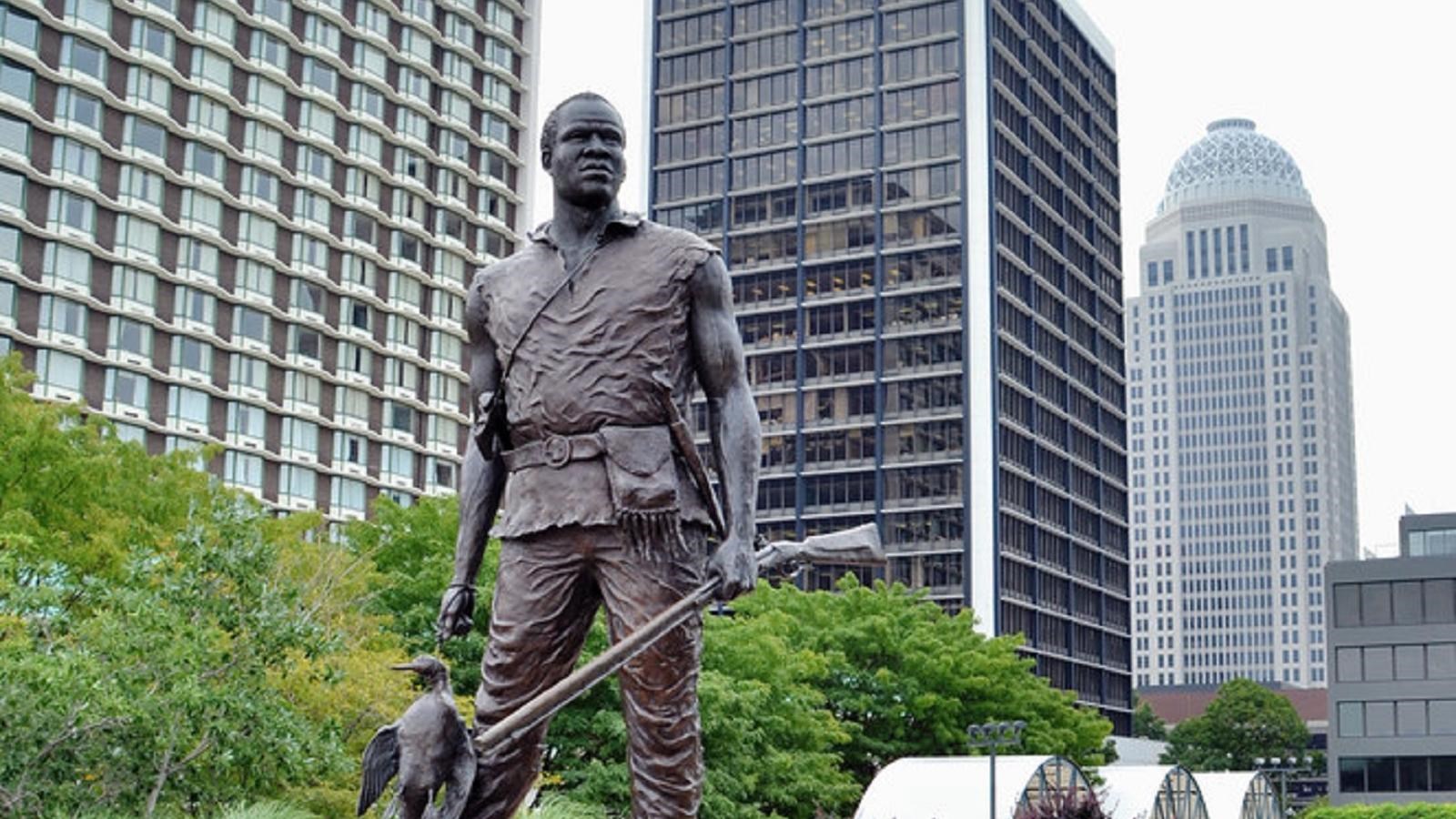Last updated: June 29, 2021
Place
York Statue on the Louisville Belvedere

"York" by jpellgen (@1179_jp) is licensed under CC BY-NC-ND 2.0
Cellular Signal, Historical/Interpretive Information/Exhibits
Lewis and Clark NHT Visitor Centers and Museums
This map shows a range of features associated with the Lewis and Clark National Historic Trail, which commemorates the 1803-1806 Lewis and Clark Expedition. The trail spans a large portion of the North American continent, from the Ohio River in Pittsburgh, Pennsylvania, to the mouth of the Columbia River in Oregon and Washington. The trail is comprised of the historic route of the Lewis and Clark Expedition, an auto tour route, high potential historic sites (shown in black), visitor centers (shown in orange), and pivotal places (shown in green). These features can be selected on the map to reveal additional information. Also shown is a base map displaying state boundaries, cities, rivers, and highways. The map conveys how a significant area of the North American continent was traversed by the Lewis and Clark Expedition and indicates the many places where visitors can learn about their journey and experience the landscape through which they traveled.
Erected and subsequently dedicated in the fall of 2003, the bronze sculpture of York, the African American man who accompanied famed explorers Lewis and Clark on their 1803 expedition of the west, is the work of nationally-renowned artist and sculptor Ed Hamilton. The 8 foot sculpture was commissioned by the city of Louisville in commemoration of the 200th anniversary of Lewis and Clark’s historical trip. It pays homage to the contributions of York, born a slave and the childhood companion of Clark, and his significant role in Lewis and Clark’s Corps of Discovery expedition from 1803 through 1806. The York Statue sits atop the Belvedere, located at the corner of Fifth & Main Streets, overlooking the Ohio River.
The following is taken from content created by the National Park Service:
Little is known about the life of York. He was an enslaved man owned by William Clark, and later became a member of the Corps of Discovery. William Clark inherited York as property when the elder Clark died, and the two were around the same age. York was one of only two members of the original Corps who was married.
York is often mentioned in the journals kept by both Lewis and Clark throughout the course of the Expedition. These journal entries indicate that he experienced freedoms that few enslaved people had, though these freedoms would be revoked upon his return to the Clark plantation.
The journals indicate that York was allowed to hunt, which was notable because African Americans weren’t generally allowed to handle guns. He became the primary caregiver to Charles Floyd, who died during the Expedition from what is believed to have been appendicitis. He risked his life to save Clark, Sacagawea, and her son when they were caught in a flash flood. York is also credited with being the first African American to have a vote equal to that of a white man. In November 1805 the Corps held a vote to decide where to camp for the winter, and both York and Sacagawea cast votes on that location.
When the Corps of Discovery returned from the Expedition, each member – except York – received double pay and 320 acres of land. York, on the other hand, returned to slavery. Clark denied York’s initial requests for freedom, recording in 1808 that:
“I did wish to do well by him. But as he got Such a notion about freedom and his emence Services…I do not think with him, that his Services has been So great/or my Situation would promit me to liberate him.”
York was finally freed sometime after 1815. With his freedom, Clark gave York a wagon and team of horses, with which York created a hauling business. By 1832, however, Clark told author Washington Irving that York’s business failed, and that he had contracted cholera and died in Tennessee. The location of his burial is unknown.
